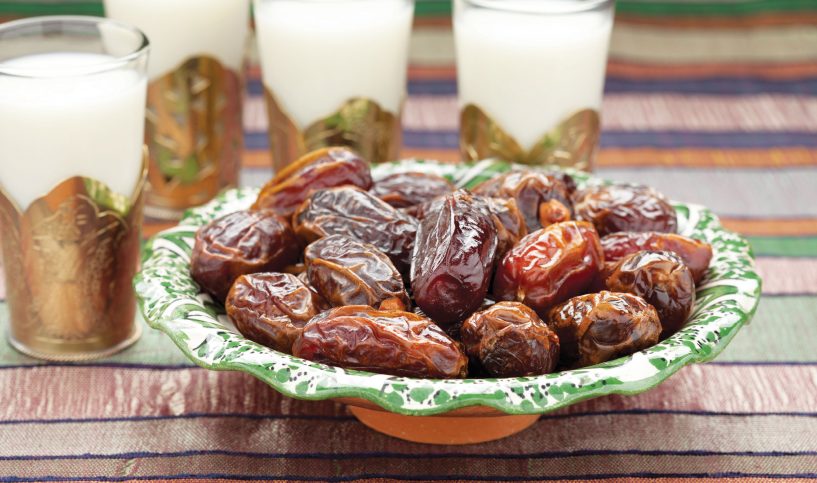Ali Al-Haddad is on a mission to rid Kuwait of faulty diet fads, lowering the alarmingly high rate of obesity, and empowering people to choose healthier food options through GET2FIT. This month, he focuses on Ramadan fasting techniques in an attempt to anticipate all the good and bad that the month can potentially offer us in terms of dietary goals.
First things first, Ramadan is a month of fasting, not eating, I believe many people get this mixed up. The main lesson we should come out with after Ramadan is that eating is not the most important part of your life. You eat because you want to live, not the other way around.
So, to make a long story short, the most important thing you should do in Ramadan is drink water every 2 hours after breaking fast, to avoid dehydration. By not doing so, you are most likely going to face so much thirst the day after that it might be hard to continue. Moreover, you should try to forget about almost everything that has cheese in it: like pizza, mozzarella sticks, and sambusa, especially if it’s your last meal before you start fasting the next day. This is because cheese will make you super thirsty. Furthermore, fat will play a major role in making you feel full for some time, then all of a sudden, you are both hungry and thirsty.
The most frequent mistake made during Ramadan is eating too much, all at once. After fasting people purge with things like meat, rice, konafa (a sweet with cheese), cola, sambusa, meat balls, hareees, taboolah, and bread that’s filled with chicken or meat; all eaten at once like if it was one big meal. Think again! Each piece from the above really should be counted as one meal. So, think more about how many meals you are willing to eat. In the contemporary nutrition model, we would need to classify our food before we eat into broad categories such as proteins, carbohydrates, good and bad fats, etc. In our clinic, we teach people how to differentiate, and group these categories further, so that they can eat what they want based on these prescribed classifications. By doing this, they can more clearly see that they should only eat one thing from each section.
What’s more is that a lot of people report signs of headaches and dizziness after eating too much food all at once. The reason behind this is that most of the blood inside the brain will go down to the stomach to support the digestive system; with less blood in the brain, you will be left feeling light-headed and sleepy. So, to avoid that, you should break down your meals into four small meals instead of 2 super-sized meals.
Finally, people should be very aware of 3 very important rules in contemporary nutrition:
Rule # 1: 80/20 rule. This means if you did 80 % correct and 20% wrong in your day, in terms of eating habits, diet, and nutrition, you are still going to lose weight. So you have a built-in margin of error—just do not exceed it.
Rule # 2: Your stomach needs 20 minutes to report to your brain that it is full. So, do not expect to always leave the table feeling full at the time you left it. If you did, then after 20 minutes you will be suffering from both stomach pains and a headache.
Rule # 3: If you eat the same amount of food, just divided into smaller portions, at different times in the same day, you are going to lose weight. Eating the same amount of food, just not divided and all at once: you are going to gain weight! Yes, it is very much like a magic trick. Fortunately, it is proven in science and that is backed up with so much evidence that there is no room for mistakes. Try it out, you won’t regret it—I promise!
Check out @GET2FIT on Instagram. The GET2FIT Clinic is located on the first floor of Shaymaa Tower in Kuwait City. Please call 9718 8033 and 5571 0033 for more information.










